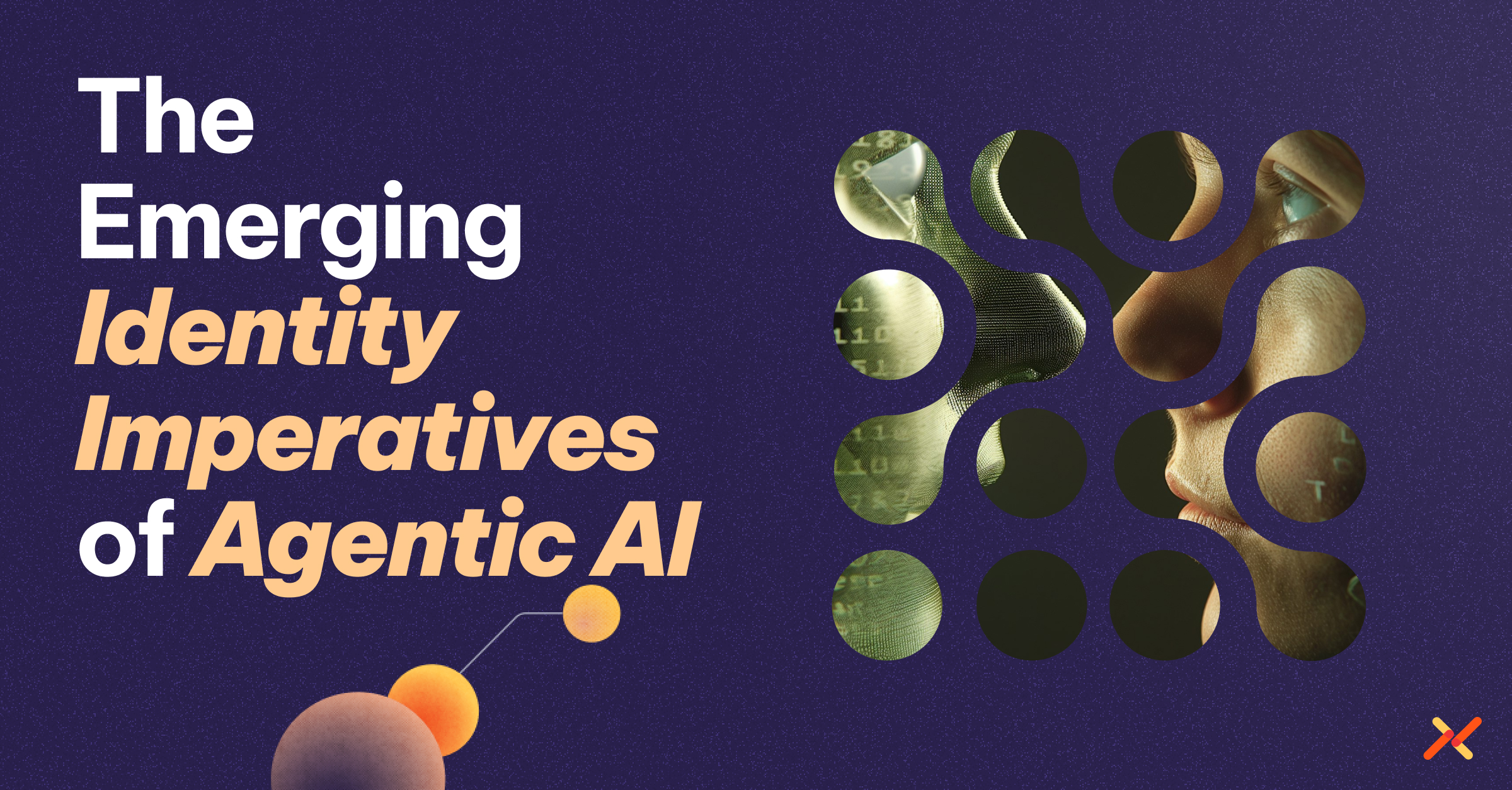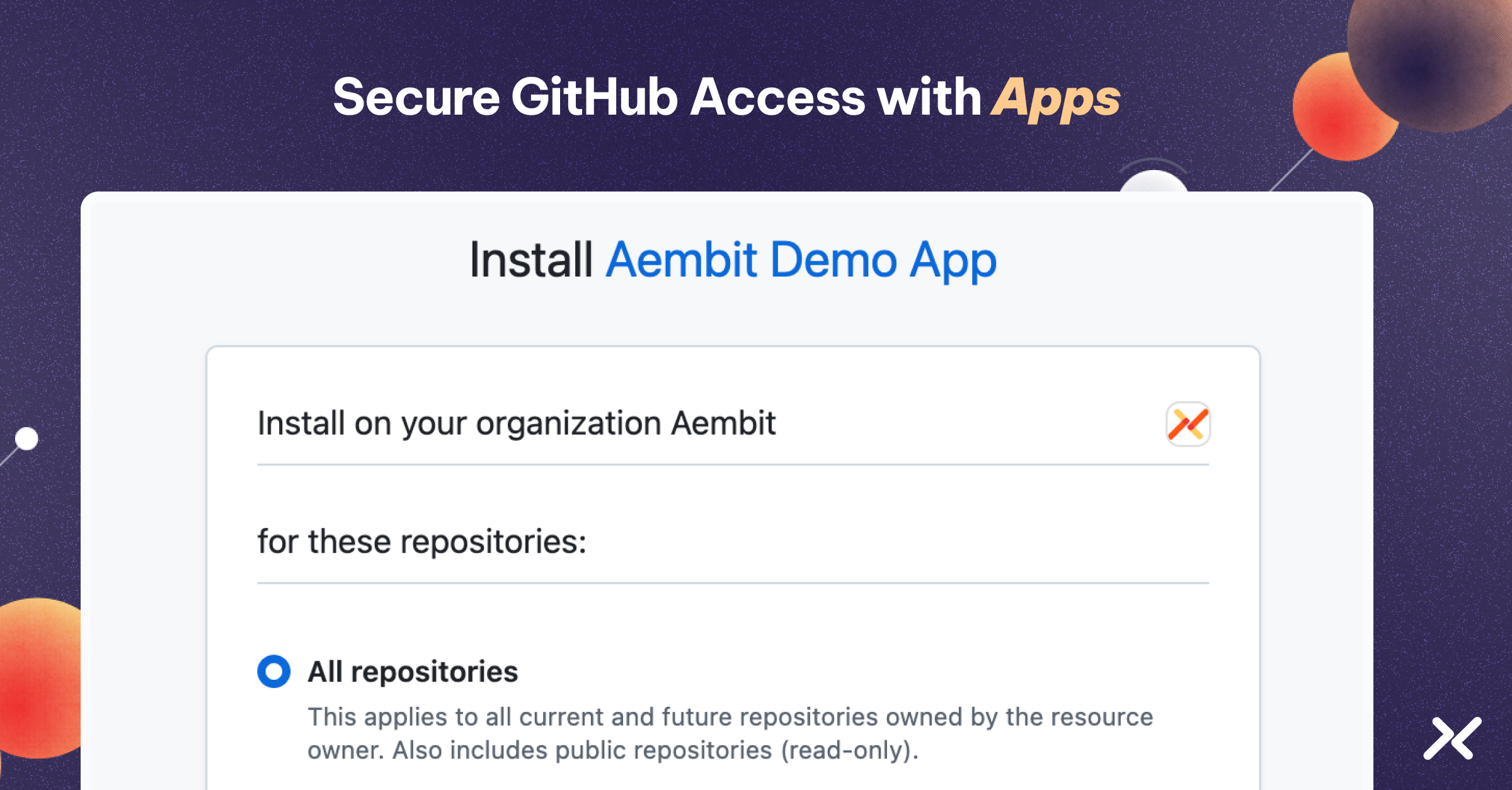The robots aren’t plotting a takeover just yet, but in the world of cybersecurity, identities are no longer strictly a human affair. As organizations lean heavily into cloud computing, automation, and DevSecOps, non-human identities – think applications, APIs, and microservices – have become critical players in the security landscape, right alongside their living, breathing counterparts.
Unlike human identities, which typically involve user-to-application interactions, non-human identities operate within a highly dynamic and distributed ecosystem, interacting with a multitude of services, APIs, artificial intelligence (AI) tools, and cloud resources, often across different environments and platforms.
This requires specialized access controls, identity federation, and real-time policy enforcement to secure. Traditional security tools, which are designed for more predictable human interactions, struggle to manage the dynamic, automated nature of non-human identities. As a result, securing these identities presents a unique challenge that demands tailored solutions.
Non-human identities operate within a highly dynamic and distributed ecosystem, interacting with a multitude of services, APIs, and cloud resources, often across different environments and platforms. This requires specialized access controls, identity federation, and real-time policy enforcement to manage and secure.
Non-Human Identities: Defined
Have you ever thought about how your favorite apps talk to each other without a human in the loop? For instance, a delivery service app that needs to check your address with a mapping service. Or what about how your favorite streaming service recommends shows. That’s powered by non-human identities (NHIs) communicating with various APIs and databases to fetch personalized content for you.
This seamless exchange is now a standard practice in the enterprise, where non-human identities orchestrate complex workflows and drive automation with minimal human oversight. By enabling these behind-the-scenes communications, businesses can build more innovative products, streamline operations, and empower customers with personalized, responsive experiences that scale effortlessly.
NHIs refer to digital identities assigned to entities other than humans. These include applications, scripts, microservices, APIs, devices, and, crucially, the service accounts that they use. Service accounts function similarly to user profiles, providing specific identities to automated processes and applications, authorizing specific privileges within other systems.
Unlike human identities, which are typically associated with individual users, non-human identities are designed to enable system-to-system (often, workload-to-workload) communication. This distinction is essential as it underscores the need for different security and management.
The rapid proliferation of NHIs has fundamentally altered how businesses need to think about identity and access management. Every new application, API, microservice, or automated script demands a unique identity to authenticate and interact securely with other systems.
With NHIs now outpacing human identities by a 45:1 ratio, compromises – whether accidental or malicious in nature – are becoming more frequent, and attackers are increasingly targeting these authentication artifacts. It’s no wonder security – and compliance – teams are taking notice.
Several high-profile companies have been impacted by credential exposure, including:
- The New York Times
- Hugging Face
- Dropbox
- Sisense
- Cloudflare
- Microsoft
- CircleCI
- Uber
- Github
What is Driving the Rise of Non-Human Identities?
The proliferation of NHIs is driven by several technological trends, including:
- Cloud Computing:
The growth of cloud infrastructure, often across multiple providers, has led to an increase in automated workflows and inter-service communication, necessitating the use of non-human identities. - APIs and Microservices:
As organizations decompose monolithic applications into decentralized, distributed microservices, these autonomous services must communicate with each other over a network, typically using APIs, to collectively provide the full functionality of the application. This shift significantly increases the need for secure workload-to-workload communication, further enhancing the reliance on NHIs to authenticate and authorize these interactions, ensuring the integrity and security of the overall application. - Automation and DevOps:
Automated processes, such as CI/CD pipelines, rely heavily on NHIs to perform tasks without human intervention. - Artificial Intelligence and Machine Learning:
As AI and ML models are increasingly integrated into business processes, they require access to vast datasets and computational resources. These interactions are often handled through NHIs, which facilitate secure communication between AI systems, data sources, and processing units, driving further growth in non-human identities.
Unlike human identities, which are generally tied to a finite and relatively stable number of employees or users and evolve slowly – usually reflecting changes in roles or permissions, non-human identities can multiply at an astonishing rate, especially in environments where containers and virtual machines are created and terminated quickly, typically within hours to just a couple of days. The challenge for DevSecOps teams is managing this vast and ever-changing array of NHIs without compromising security and eroding efficiency (or increasing developer burden).
Each NHI accessing sensitive data and resources represents a potential attack surface, and the sheer number of them increases the risk of misconfiguration, credential sprawl, and unauthorized access. Traditional identity management practices, developed for human users, often struggle to scale effectively for NHIs. This makes it imperative to adopt new security approaches, such as Zero Trust and automated identity lifecycle management, to ensure that non-human entities only have the necessary permissions, precisely when needed.
Human vs. Non-Human Identities: Key Differences Every DevSecOps Professional Should Know
Distinguishing between human and non-human identities is key to effective identity management. Here are the primary differences across several critical domains:
Human Identities | Non-Human Identities
| |
Authentication | Rely on passwords, multifactor authentication (MFA), and biometrics for authentication. These methods are designed for user-friendly access, balancing security with usability. | Use mechanisms like API keys, OAuth tokens, and digital certificates. These are programmatically managed and often automated, focusing on seamless workload-to-workload communication without human intervention. |
Authorization | Have broad, role-based access to multiple systems and resources, depending on their job functions. This can include access to sensitive data, applications, and administrative tools. | Ideally have narrowly scoped permissions designed to perform specific tasks, such as accessing a particular API or interacting with a specific microservice. |
Lifecycle Management | Managed through HR systems, with manual or semi-automated processes for onboarding, role changes, and deprovisioning upon termination. Human identities tend to have longer lifecycles, often lasting the duration of employment. | Persist over time, especially when tied to critical services or configurations set up by employees, such as OAuth connections or service integrations. These identities can outlast their creators, becoming "orphaned" if not properly managed. While some are short-lived in dynamic environments like containers, others require automated provisioning, rotation, and deprovisioning to maintain security and relevance. |
Behavior | Exhibit behavior patterns based on user activities, such as logging into workstations, accessing applications during business hours, and interacting with various systems based on role and task requirements. | Operate continuously or on a schedule, performing repetitive tasks without human intervention. Their behavior is predictable, based on the programmed functions they serve, and deviations from expected patterns often indicate a security issue. |
Privilege | May require higher privileges, especially for administrative roles, leading to potential risks if credentials are compromised. These privileges are often broader and can access multiple systems simultaneously. | Should have minimal privileges necessary to perform their specific function. However, in practice, overprovisioned service accounts and NHIs are common, creating significant security risks. This overprovisioning happens because setting and maintaining precise permissions is complex and time-consuming. Governance tools tailored for NHIs help address this issue by automating the management of permissions, ensuring that access is properly scoped and reducing the attack surface. |
Tech Stack | Managed with traditional IAM tools like Okta, Active Directory, SSO platforms, and MFA solutions. These tools are well-established and integrated into user-facing applications. | Involves managing automated interactions in modern IT environments, such as with API gateways, service meshes, and infrastructure as code (IaC). While traditional secrets managers and cloud IAM handle some security needs, they often fall short in managing access at scale across diverse systems. Workload IAM offers automated, policy-based controls tailored specifically for NHIs. |
Implementation | Implementation focuses on user experience, ensuring that authentication and authorization are as frictionless as possible while maintaining security. This includes user training, password policies, and regular security awareness programs. | Centers around automation and scalability, with a focus on integrating security into distributed architectures and cloud environments. Implementation ensures seamless identity management across various platforms and use cases, while reducing the need for human intervention and minimizing the risk of manual errors. |
Why NHIs are Critical to Businesses
Non-human identities are foundational to modern IT environments because they enable secure, automated interactions across a wide array of systems. From DevOps pipelines to cloud-native applications, NHIs ensure that systems can communicate and operate without manual oversight. This automation drives efficiency, scalability, and robustness in IT operations.
For example: an application accessing a database or an API calling another service within a microservices architecture requires a non-human identity to authenticate and authorize these actions. These identities are not tied to a single individual but are instead associated with the entity they represent, such as an application or a device.
Top Use Cases for Non-Human Identities in Enterprise IT
Non-human identities (NHIs) are indispensable in modern enterprise IT, playing a critical role across various scenarios to enhance security, automation, and efficiency:
- CI/CD and Supply Chain Security:
NHIs are crucial in continuous integration/continuous deployment (CI/CD) pipelines and supply chain security. By eliminating secrets from software development pipelines, NHIs ensure identity-based access to sensitive downstream resources, reducing the risk of credential exposure and enhancing overall security. - Zero Trust for NHIs:
Implement Zero Trust principles for workloads, where conditional access is granted only after verifying posture conditions, such as ensuring a provider like CrowdStrike is installed and passing checks. This approach ensures that non-human identities are subject to the same rigorous security standards as human identities, reducing potential attack vectors. - API Access:
Facilitate secure communication between microservices and third-party APIs. For example, AI, SaaS, and API access governance is crucial in controlling access to third-party services like Salesforce, Microsoft Graph, and Stripe, applying policy-based controls to manage permissions effectively. - Service-to-Service Communication:
Enable secure data exchange and operations in microservices architectures. This is vital for ensuring consistent, policy-driven access based on workload identity, applied seamlessly across both legacy and modern environments, and across multiple clouds. - Multi-Cloud Resource Federation:
Manage permissions for virtual machines, containers, and serverless functions in cloud environments. NHIs help ensure that these resources have the appropriate level of access, while maintaining security and compliance. - Secure Data Lake & Database Access:
Enforce policy-driven access based on workload identities, consistently applied across both legacy and modern environments. This ensures secure and controlled access to data lakes and databases, whether they reside on-premises or in the cloud. - IoT Device Management:
Ensure the secure operation and connectivity of IoT devices. NHIs help manage the identities of these devices, enabling secure access and data exchange within the broader network infrastructure.
Managing and Securing Non-Human Identities: Enterprise Risks, Strategies, and Best Practices
Non-human identities have become vital to modern IT, driving automation and secure communication across applications, services, and cloud resources. But with their growth comes increased risks. Traditional tools often struggle to manage these dynamic identities, making it crucial to adopt automated, policy-driven approaches tailored specifically for NHIs.
Risk #1: Credential Sprawl and Static Credentials
With the rapid growth of NHIs, you often end up with too many credentials, many of which are static, hardcoded, and unmanaged. Implementing IAM solutions that focus on short-lived, identity-based credentials is key to reducing the risk of secrets leaks and data breaches. For example, if your CI/CD pipeline (or the supporting infrastructure) includes long-lived secrets, then those secrets can be observed, stolen, and used to penetrate your environment. Secrets may accidentally be written out to logs, committed to code repos in plain text, or be compromised via poisoned code.
Risk #2: Over-Permissioning
One common mistake is granting too many permissions to NHIs. While traditional PAM (privileged access management) technology doesn’t directly carry over to NHIs, adapting its core principles – such as vaulting, credential requests, policy evaluations, and enforcement – to NHI-specific IAM solutions can mitigate this risk. Automate regular audits, deprovisioning, and identity lifecycle management to keep permissions aligned with current needs. Use just-in-time access and continuous monitoring to detect and address anomalies promptly, and implement role segmentation and separation of duties to further mitigate risks. These IAM strategies help maintain a secure environment, minimizing the attack surface associated with NHIs.
Risk #3: Lack of Visibility
NHIs often don’t get the same level of oversight as human identities, making it hard to spot suspicious activity. Implementing IAM solutions with monitoring and logging tailored for NHIs ensures you can detect and respond to issues early. Tools like AWS CloudTrail and Splunk can also help you keep an eye on cloud-specific issues before they escalate.
Risk #4: Weak or Inconsistent Policy Enforcement
Policies governing access, especially across diverse environments, can vary. This is why it’s imperative to implement uniform IAM standards that ensure consistent NHI policy enforcement across all environments. Automated policy enforcement tools can help achieve this consistency, reducing the risk of misconfigurations and unauthorized access.
Risk #5: Inadequate Lifecycle Management
Managing the lifecycle of NHIs involves ensuring that both the identities themselves and their associated credentials are securely managed throughout their existence. For identities, this means automating processes like provisioning, updating roles or permissions, and deprovisioning when they are no longer needed. For credentials, it involves issuing, rotating, and revoking them regularly to minimize the risk of exposure or misuse. Adopting short-lived, secretless credentials further enhances security by reducing the lifespan and exposure of sensitive access information.
Risk #6: Failure to Audit and Monitor
It’s important not only to monitor access but also to track the type of credentials being used. IAM solutions that provide detailed auditing of NHI activities help you detect and respond to incidents in a reactive manner, but also demonstrate to auditors your proactive efforts to transition from static to short-lived credentials, enhancing your security posture. You can also find help by using cloud IAM platforms like AWS IAM, Azure AD, or Google Cloud IAM to centralize control and enforce strict access policies – although keep in mind that these tools traditionally fail to provide coverage and support across providers.
Risk #7: Weak Authentication
Don’t overlook the importance of robust authentication. Use IAM solutions that support OAuth tokens, mTLS, and hardware security modules (HSMs) to secure NHIs and integrate these mechanisms into your existing infrastructure for a consistent and secure approach.
Risk #8: Lack of Scalability and Compliance
Finally, as non-human identities multiply, NHI-specific IAM solutions will help you scale efficiently while maintaining security. Ensure consistency with unified access control policies and automation tools like Terraform, and stay compliant by maintaining detailed audit trails and conducting regular audits.
Managing and Securing Non-Human Identities with Workload IAM
While the above tips provide important best practices, they often address the challenges of managing non-human identities in a piecemeal fashion. A holistic approach, like a workload identity and access management solution, offers a more comprehensive solution by integrating these practices into a unified system.
Aembit has led the market in solving this emerging challenge by pioneering non-human IAM with its Workload IAM Platform. It enables policy-based access management between workloads and the sensitive resources they access, moving beyond visibility and governance to proactively shrink the attack surface of rapidly-growing and highly distributed NHIs. Here’s how Aembit helps:
- Real-Time Policy Enforcement:
Validates access rights in real-time, ensuring that non-human identities can only access resources they are explicitly authorized for. - Secretless Access Tokens:
Enables the use of secretless access tokens, reducing reliance on static credentials and minimizing the risk of credential compromise. - Conditional Access Policies:
Supports Zero Trust principles by enforcing conditional access policies based on factors such as the workload identity’s posture and geographical location, as well as real-time threat intelligence. - Automated Credential Management:
Automates the lifecycle management of non-human identity credentials, including issuance, rotation, and revocation, significantly reducing operational overhead. - Identity-Based Logging:
Provides comprehensive logging and auditing capabilities, allowing organizations to monitor and analyze the actions performed by non-human identities, enhancing security visibility.
Wrapping Up
In modern enterprise environments, where automation and interconnectivity drive business success, securing non-human identities is no longer optional – it’s a necessity. As organizations continue to expand their cloud infrastructures and deploy more microservices, the volume of non-human identities will only increase, bringing with it new vulnerabilities and attack vectors.
It’s not just about managing these identities; it’s about proactively securing them with the same rigor we apply to human users. By adopting automated, policy-driven identity management strategies, and embracing solutions like Aembit, organizations can ensure that their digital ecosystems remain resilient, scalable, and secure against the evolving threat landscape. The stakes are high, but with the right approach, the security of non-human identities can be a powerful enabler of innovation, rather than a point of weakness – and attacker opportunity.
The Workload IAM Company
Manage Access, Not Secrets
Boost Productivity, Slash DevSecOps Time
No-Code, Centralized Access Management



